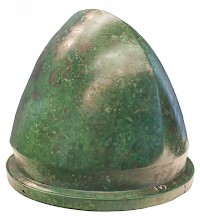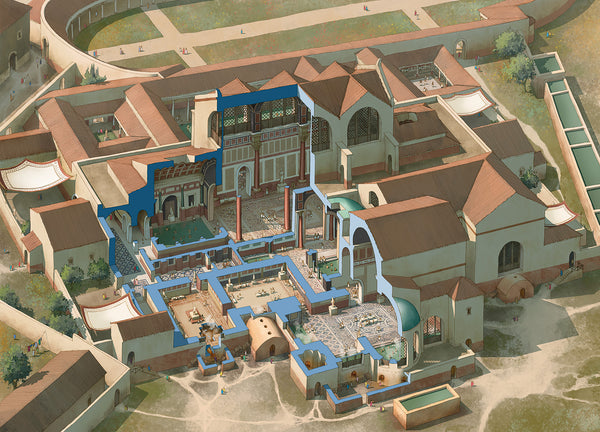Ancient Warfare at the Museum - 6
 One extremely awkward feature of running a magazine like Ancient Warfare is the unequal distribution of finds. Whereas, in my experience, it seems our readers cannot get enough of Hellenistic warfare, it’s a serious pain in the posterior to come up with relevant and varied photos of finds.
One extremely awkward feature of running a magazine like Ancient Warfare is the unequal distribution of finds. Whereas, in my experience, it seems our readers cannot get enough of Hellenistic warfare, it’s a serious pain in the posterior to come up with relevant and varied photos of finds.
Conversely, a remarkable number of helmets have been found in early Italian contexts, a subject which is much less popular as a topic for articles. It’s unfair I tell you! It almost makes it tempting to plan forward from the photo collection, or smuggle things into articles where they don’t belong.
A quick (but I’m happy to be corrected, dear reader) survey shows that we published a Negau helmet only once and accidentally called it a Pilos helmet (d’oh!). To be fair, from a certain angle, they can look alike (-ish). And yet, that is surprising, because many hundreds of these Negau helmets survive. In fact, where most helmet types simply get named after the locality where the first sample was found or academically described, the first find of Negau helmets was a cache of some 340(!) examples. It’s the one case where, it seems to me, the naming convention is entirely justified.
These bronze helmets are widespread in Italy and the Adriatic coast and are generally found in grave sites from the sixth and fifth centuries BC. The particular helmet depicted here is an example of the so-called Vetulonia subtype, after the site of another large cache of 125 helmets on the northwestern Italian coast. They are found throughout the ‘boot’ of Italy, mostly on the coastal areas of central Italy, indicating even more common use by Italic peoples and especially the Etruscans. Despite the smooth exterior of this type of helmet, they were apparently often still crested with horsehair, though the crest holders are often missing. On the lower inside edge of the helmet was a pierced rim to which a liner could be sewn, as well as holes for a leather chinstrap. Interestingly, some helmets are actually cast bronze and very heavy, while others are made of much thinner bronze sheet. That, as well as the sheer size of the surviving collection of helmets, indicates they were made by many workshops throughout central and northern Italy.
Negau helmets were sometimes decorated, sometimes inscribed (as seems to have been done with the helmet depicted here), and a few were dedicated as spoils of war. Hence the inclusion of that helmet in Ancient Warfare IX.6: it was dedicated to Zeus in Olympia by proud Syracusans who had captured the helmet from its, presumably, previous Etruscan owner at the naval battle off Cuma in 474 BC. We’ll have to find an excuse to come back to these helmets another time I think…

